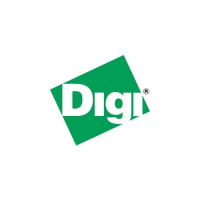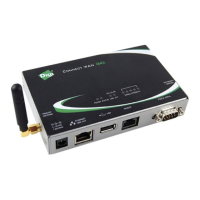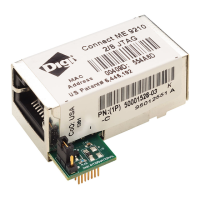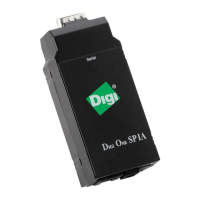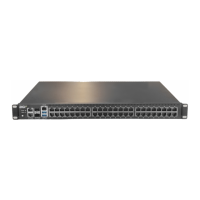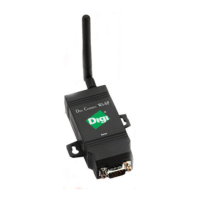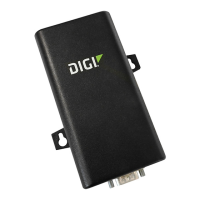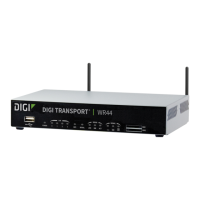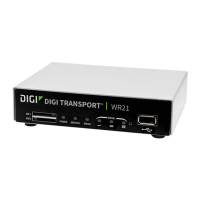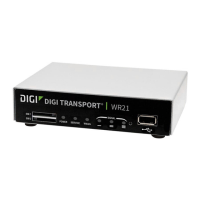Configurethedeviceusing theweb interface Configuration through Digi Remote Manager
Digi Connect Family and ConnectPort TSFamily
123
For more information on Industrial Automation, see the set ia command description in the Digi
Connect®Family Command Reference and the application note Remote Cellular TCP/IPAccessto
ModbusEthernet and Serial Devicesavailable on the Digi Support site.
Known limitations
n
You can use Digi RealPort only when the ModbusBridge function is disabled. You cannot use
RealPort with Modbus/RTU or ASCII to accessthe Modbus Bridge function.
n
Theoutgoing slave idle time used for remote ModbusIP-based slavesdoes not always close
idle sockets predictably.
n
While the Modbusbridge isactive, do not attempt to “Port Forward” TCP502 or UDP502 to
local Modbus/TCPserverswhile the Modbus Bridge isactive. Thiscausesneither function to
work. Disable the ModbusBridge if you want traditional Router/NAT function for Modbus/TCP
port 502.
Enable or disable ModbusBridge
To enable or disable ModbusBridge, choose one of the following options:
n
To disable the ModbusBridge, select a different port profile than Industrial Automation.
n
To enable Modbus Bridge, reselect the Industrial Automation port profile.
Note Any specialized settings configured using the set ia commandsare lost when you disable
the Modbusbridge. You must reconfigure these settingswhen you re-enable the Industrial
Automation port profile.
Configuration through Digi Remote Manager
Remote Manager isan on-demand service. After creating a Remote Manager account, you can connect
to Remote Manager. There are no infrastructure requirements. Remote devicesand enterprise
businessapplications connect to Remote Manager via standards-based Web Services.
See the Remote Manager User Guidefor detailson:
n
Using Remote Manager as a management interface
n
Creating a Remote Manager account
n
Adding your Digi Connect and ConnectPort TSFamily device to the Remote Manager device list
so you can manage it from that interface
IPv6 support
Select Digi productssupport Internet Protocol version 6 (IPv6), electronic devices use this network
layer standard to exchange data acrossa packet-switched network. IPv6is providesmore addresses
for networked devices than IPv4.
Theprimary change from IPv4 to IPv6 isthe length of network addresses. IPv4 addressare 32 bits
long. In contrast, IPv6addresses are 128 bits long and are typically composed of two logical parts: a
64-bit network prefix and a 64-bit host part, which is either automatically generated from the
interface’s MACaddress or assigned sequentially.
IPv6 addresses are normally written aseight groupsof four hexadecimal digits. For example:
3002:0ff2:63a5:0db8:42ae:0040:02de:3560. You can omit leading zerosin a group. If a four-digit group
is0000, the zeros may be omitted, and that part of the addressshortened to two consecutive colons,
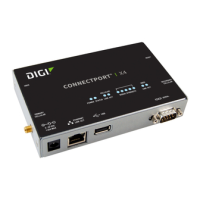
